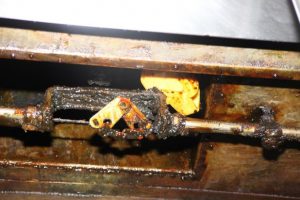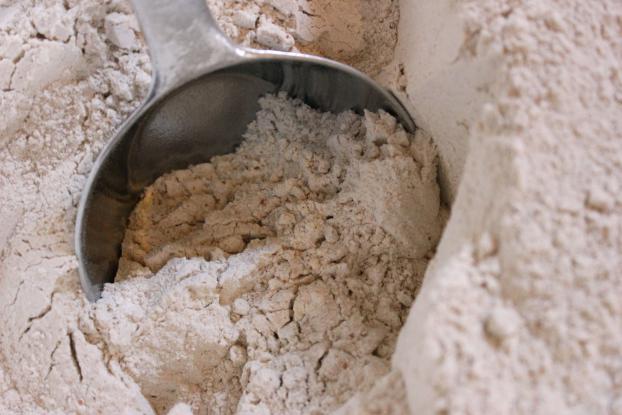In our ServSafe MN classes we spend half a day discussing how to safely prepare and serve food to customers. But owners and food service managers must consider more than just food safety to protect employees and customers.
This is the third in a series of blogs that look specifically at one of the hazards that Scott Futrell, a local fire protection consultant, has provided to assist you in protecting your customers, employees and business.

Image credits: Futrell Fire Consult & Design, Inc.
Fire safety in your restaurant kitchen with solid-fuel burning appliances
(This is NOT covered in ServSafe MN classes or the certification exam)
Solid fuel burning appliances create grease-laden creosote. The flash point and autoignition temperatures of wood tar creosote is surprisingly low. All it takes to ignite creosote in hoods, filters, and ducts is a spark, burning ember, or flame. Unfortunately all of these igniters are present in the solid-fuel cooking that raises the creosote temperature to 165°F. Creosote’s autoignition point is the same as paper. This temperature is significantly lower than the auto-ignition temperature of the grease that increases the potential hazard. Even worse the combination of creosote and grease in exhaust hood plenums and ducts can be easier to ignite than grease alone, and can burn hotter.
Cooking of any type has inherent risks. Solid fuel appliances dial up the threat with the addition of highly combustible materials. Restaurants that use these methods generate a large amount of heat and grease, especially when cooking meat. Grease accumulation will make for a dangerous environment, if ductwork isn’t properly installed or maintained.
Some restaurants don’t fully extinguish the fires in solid fuel appliances to minimize reheating. Wood fire pizza ovens operate between 500 and 600°F. Restaurants often keep these appliances smoldering through the night in order to keep the stone warm when not in use. Leaving a fire in the appliance while unattended overnight dramatically increases the risk for businesses.
Carbon-monoxide dangers associated with solid-fuel burning appliances
(This material is informational only- NOT part of ServSafe MN classes or certification exam)
Solid fuel appliances also create the potential for increased carbon monoxide levels within the restaurant. The building’s ventilation system must deliver make-up or replacement air from the outside to resupply oxygen used by solid fuel appliances. Make-up air is also important in ensuring that smoke and exhaust drafts up the chimney, not out into the kitchen and dining areas.
Many restaurant owners do not understand the additional venting considerations or active maintenance requirements it takes to safely install and use solid fuel appliances. This puts their employees, customers and business at risk.
What can you do to protect your customers, employees and your facility investment?
(These recommendations are NOT part of ServSafe MN classes or certification exam)
- Check the design and installation of the exhaust systems for solid fuel appliances to be sure they are in compliance with codes and standards. More on this in a future edition.
- Remove ash once per day and spray it with water before storing it in a covered metal container (container should not exceed 20 gallons in capacity). Regularly remove ash from the building and place in a dumpster or container located at least 10 feet away from the building.
If you have any questions about fire safety in the food preparation environment that you would like Scott to discuss leave a comment.
ABOUT THE AUTHOR: Scott A. Futrell, PE, FSFPE, CFPS, SET, CFEI, is a fire protection consultant with Futrell Fire Consult & Design, Inc., in Osseo, Minnesota. He can be reached by e-mail at: scottf@ffcdi.com, or visit www.ffcdi.com.







